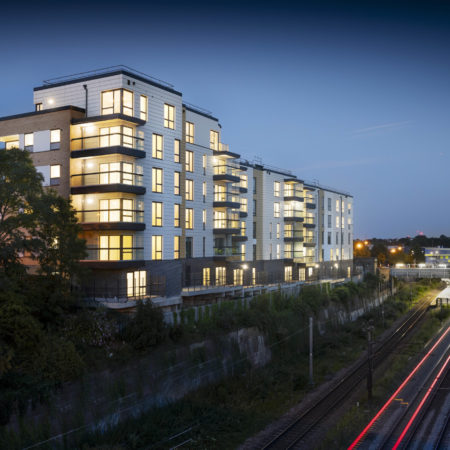Homes Will Have To Become Zero Carbon – So Why Not Build Them That Way?
The road leading to zero carbon housing has been a bit bumpy so far. Various targets and standards have been announced and then scrapped. But the direction of travel is clear. In 2018, the Committee on Climate Change identified that the UK must decarbonise its housing stock to be a zero carbon economy by 2050. This inevitably leads to a material-first approach to new house building.
For existing housing there will have to be an extensive (and expensive) retrofitting to improve energy efficiency. But what about the homes that are being built right now? It’s estimated that in 2018 just 1% of new homes were rated as EPC Band A. It’s also worth pointing out that an EPC rating says nothing about embodied carbon – the emissions generated by construction methods and materials.
Asking the Right Question
Cost (or a perception of added expense) has been one reason for the slow take up of zero carbon house building. This is partly down to back-to-front thinking. Rather than framing this as a question of how much it costs to upgrade the design of a traditionally built home, we should be focusing on the best ways to design and build zero carbon homes.
The debate then shifts from how local authorities and housing associations can manage the timing of energy efficiency upgrade costs, to how they can be eliminated from the outset.
Materials and Embodied Carbon
Carbon zero performance cannot ignore material choices and embodied carbon. As a rule of thumb, making one tonne of concrete will emit half a tonne of carbon dioxide. A net carbon zero building would need to offset those emissions, either by becoming a net generator of renewable energy over its lifetime, or by using materials such as timber with net negative levels of embodied carbon (wood absorbs and stores atmospheric carbon as it grows).
The other issue to be addressed is the performance gap between design levels of energy efficiency and reality. Here again, offsite methods that use a high content of structural timber are proven to be reliable at delivering high standards of energy efficiency in practice.
The contrast between the aftermath of the 2010 recession and today’s economic downturn is significant. Last time around, zero carbon targets were quietly abandoned or downplayed. In 2021 they are being amplified. Social housing providers are becoming much more focused on how carbon zero can be achieved in practice – and from the outset – for new homes. And this discussion starts with materials and methods.

